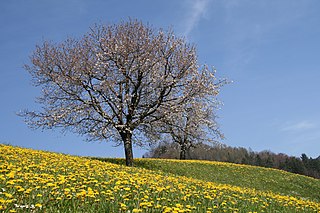 W
WThis is a list of undomesticated or feral plants, generally considered weeds, yet having some positive effects or uses, often being ideal as companion plants in gardens.
 W
WThis list contains links to lists with the common and scientific names of butterflies of North America north of Mexico.Papilionidae: swallowtails and parnassians Parnassiinae: parnassians Papilioninae: swallowtails Hesperiidae: skippers Pyrrhopyginae: firetips Pyrginae: spread-wing skippers Heteropterinae: skipperlings Hesperiinae: grass skippers Megathyminae: giant-skippers Pieridae: whites and sulphurs Pierinae: whites Coliadinae: sulphurs Dismorphiinae: mimic-whites Lycaenidae: gossamer-wings Miletinae: harvesters Lycaeninae: coppers Theclinae: hairstreaks Polyommatinae: blues Riodinidae: metalmarks Nymphalidae: brush-footed butterflies Libytheinae: snouts Heliconiinae: heliconians and fritillaries Nymphalinae: true brushfoots Limenitidinae: admirals, sisters and others Charaxinae: leafwings Apaturinae: emperors Morphinae: morphos Satyrinae: satyrs Danainae: milkweed butterflies and clearwings
 W
WThis is a geographical list of natural stone used for decorative purposes in construction and monumental sculpture produced in various countries.
 W
WA garden ornament is an item used for garden, landscape, and park enhancement and decoration. Garden ornaments include:bird baths bird feeders birdhouses columns – cast stone flower box window box folly fountains jardiniere kugel fountain garden furniture gazing spheres hanging baskets holiday – seasonal ornaments and decorations landscape lighting – decorative fixtures lawn ornaments bathtub madonnas concrete geese garden gnomes lawn jockeys plastic pink flamingos moon bridge – small ornament versions outdoor fireplace outdoor sculpture found objects such as recycled bowling balls, toilet planters, antique farm equipment kinetic sculpture masks obelisks renewable energy sculpture pagoda – small versions pedestals – e.g. terracotta, cast stone pond – rocks and boulders with basins pots urns ceramic art vases rain chains reflecting pools – small/portable types sundials topiary specimens waterfalls – small prefabricated type weathervanes wind chimes
 W
WA wide range of garden types exist. Below is a list of examples.
 W
WThis is a list of culinary herbs and spices. Specifically these are food or drink additives of mostly botanical origin used in nutritionally insignificant quantities for flavoring or coloring.
 W
WLawn ornaments are decorative objects placed in the grassy area of a property.
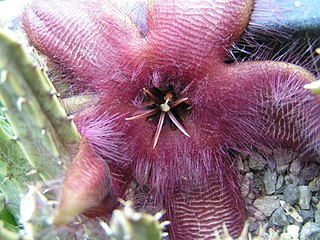 W
WSince the first printing of Carl Linnaeus's Species Plantarum in 1753, plants have been assigned one epithet or name for their species and one name for their genus, a grouping of related species. These scientific names have been catalogued in a variety of works, including Stearn's Dictionary of Plant Names for Gardeners. William Stearn (1911–2001) was one of the pre-eminent British botanists of the 20th century: a Librarian of the Royal Horticultural Society, a president of the Linnean Society and the original drafter of the International Code of Nomenclature for Cultivated Plants.
 W
WSince the first printing of Carl Linnaeus's Species Plantarum in 1753, plants have been assigned one epithet or name for their species and one name for their genus, a grouping of related species. These scientific names have been catalogued in a variety of works, including Stearn's Dictionary of Plant Names for Gardeners. William Stearn (1911–2001) was one of the pre-eminent British botanists of the 20th century: a Librarian of the Royal Horticultural Society, a president of the Linnean Society and the original drafter of the International Code of Nomenclature for Cultivated Plants.
 W
WHoneybees usually collect nectar, pollen, or both from the following species of plants, which are called honey plants, for making honey.
 W
WA permaculture project is a deployment of permaculture practices on an ongoing basis.
 W
WSince the first printing of Carl Linnaeus's Species Plantarum in 1753, plants have been assigned one epithet or name for their species and one name for their genus, a grouping of related species. Plant genera (genuses) are themselves grouped into families; all the plants in one family are more closely related to each other than to plants in any other family.
 W
WSince the first printing of Carl Linnaeus's Species Plantarum in 1753, plants have been assigned one epithet or name for their species and one name for their genus, a grouping of related species. Thousands of plant genera (genuses) have been named for people, including botanists and their colleagues, plant collectors, horticulturists, explorers, rulers, politicians, clerics, doctors, philosophers and scientists. Even before Linnaeus, botanists such as Joseph Pitton de Tournefort, Charles Plumier and Pier Antonio Micheli were naming plants for people, sometimes in gratitude for the financial support of their patrons.
 W
WSince the first printing of Carl Linnaeus's Species Plantarum in 1753, plants have been assigned one epithet or name for their species and one name for their genus, a grouping of related species. Thousands of plant genera (genuses) have been named for people, including botanists and their colleagues, plant collectors, horticulturists, explorers, rulers, politicians, clerics, doctors, philosophers and scientists. Even before Linnaeus, botanists such as Joseph Pitton de Tournefort, Charles Plumier and Pier Antonio Micheli were naming plants for people, sometimes in gratitude for the financial support of their patrons.
 W
WSince the first printing of Carl Linnaeus's Species Plantarum in 1753, plants have been assigned one epithet or name for their species and one name for their genus, a grouping of related species. Thousands of plant genera (genuses) have been named for people, including botanists and their colleagues, plant collectors, horticulturists, explorers, rulers, politicians, clerics, doctors, philosophers and scientists. Other naturalists have also been honored, including agronomists, apothecaries, geographers, geologists, meteorologists, mycologists, pharmacologists and zoologists. Even before Linnaeus, botanists such as Joseph Pitton de Tournefort, Charles Plumier and Pier Antonio Micheli were naming plants for people, sometimes in gratitude for the financial support of their patrons.
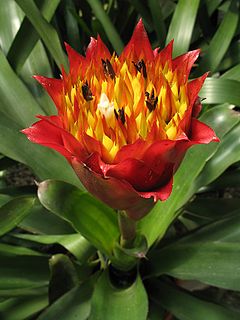 W
WSince the first printing of Carl Linnaeus's Species Plantarum in 1753, plants have been assigned one epithet or name for their species and one name for their genus, a grouping of related species. Many of these genera (genuses) are listed in Stearn's Dictionary of Plant Names for Gardeners. William Stearn (1911–2001) was one of the pre-eminent British botanists of the 20th century: a Librarian of the Royal Horticultural Society, a president of the Linnean Society and the original drafter of the International Code of Nomenclature for Cultivated Plants.
 W
WSince the first printing of Carl Linnaeus's Species Plantarum in 1753, plants have been assigned one epithet or name for their species and one name for their genus, a grouping of related species. Many of these genera (genuses) are listed in Stearn's Dictionary of Plant Names for Gardeners. William Stearn (1911–2001) was one of the pre-eminent British botanists of the 20th century: a Librarian of the Royal Horticultural Society, a president of the Linnean Society and the original drafter of the International Code of Nomenclature for Cultivated Plants.
 W
WSince the first printing of Carl Linnaeus's Species Plantarum in 1753, plants have been assigned one epithet or name for their species and one name for their genus, a grouping of related species. Many of these genera (genuses) are listed in Stearn's Dictionary of Plant Names for Gardeners. William Stearn (1911–2001) was one of the pre-eminent British botanists of the 20th century: a Librarian of the Royal Horticultural Society, a president of the Linnean Society and the original drafter of the International Code of Nomenclature for Cultivated Plants.
 W
WSince the first printing of Carl Linnaeus's Species Plantarum in 1753, plants have been assigned one epithet or name for their species and one name for their genus, a grouping of related species. Many of these genera (genuses) are listed in Stearn's Dictionary of Plant Names for Gardeners. William Stearn (1911–2001) was one of the pre-eminent British botanists of the 20th century: a Librarian of the Royal Horticultural Society, a president of the Linnean Society and the original drafter of the International Code of Nomenclature for Cultivated Plants.
 W
WThe nectar resource in a given area depends on the kinds of flowering plants present and their blooming periods. Which kinds grow in an area depends on soil texture, soil pH, soil drainage, daily maximum and minimum temperatures, precipitation, extreme minimum winter temperature, and growing degree days. The plants listed below grow in USDA hardiness zone 5. A good predictor for when a plant will bloom and produce nectar is a calculation of the growing degree days. Hopkins' bioclimatic law states that in North America east of the Rockies, a 130-m (400-foot) increase in elevation, a 4° change in latitude North (444.48 km), or a 10° change in longitude East will cause a biological event to occur four days later in the spring or four days earlier in the fall. In botany, the term phenology refers to the timing of flower emergence, sequence of bloom, fruiting, and leaf drop in autumn.
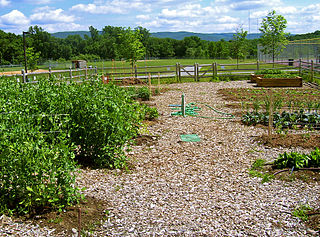 W
WThe following outline is provided as an overview of and topical guide to organic gardening and farming:
 W
WThe nectar resource in a given area depends on the kinds of flowering plants present and their blooming periods. Which kinds grow in an area depends on soil texture, soil pH, soil drainage, daily maximum and minimum temperatures, precipitation, extreme minimum winter temperature, and growing degree days. The plants listed below grow in USDA hardiness zone 5. A good predictor for when a plant will bloom and produce nectar is a calculation of the growing degree days. Hopkins' bioclimatic law states that in North America east of the Rockies, a 130-m (400-foot) increase in elevation, a 4° change in latitude North (444.48 km), or a 10° change in longitude East will cause a biological event to occur four days later in the spring or four days earlier in the fall. In botany, the term phenology refers to the timing of flower emergence, sequence of bloom, fruiting, and leaf drop in autumn.
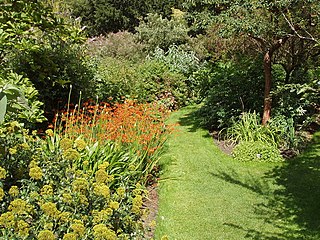 W
WThis is an alphabetical list of plants used in herbalism.
 W
WThis is a list of poisonous flowers.
 W
WPoisonous plants are plants that produce toxins that deter herbivores from consuming them. Plants cannot move to escape their predators, so they must have other means of protecting themselves from herbivorous animals. Some plants have physical defenses such as thorns, spines and prickles, but by far the most common type of protection is chemical.
 W
WThe term pollen source is often used in the context of beekeeping and refers to flowering plants as a source of pollen for bees or other insects. Bees collect pollen as a protein source to raise their brood. For the plant, the pollinizer, this can be an important mechanism for sexual reproduction, as the pollinator distributes its pollen. Few flowering plants self-pollinate; some can provide their own pollen, but require a pollinator to move the pollen; others are dependent on cross pollination from a genetically different source of viable pollen, through the activity of pollinators. One of the possible pollinators to assist in cross-pollination are honeybees. The article below is mainly about the pollen source from a beekeeping perspective.
 W
WThe Remarkable Gardens of France is intended to be a list and description, by region, of the more than three hundred gardens classified as "Jardins remarquables" by the Ministry of Culture and the Comité des Parcs et Jardins de France.
 W
WThe following is a partial list of strawberry cultivars. Strawberries come in a wide assortment of commercially available cultivars. Differences between cultivars may include the date the fruit ripens, disease resistance, freezing quality, firmness, berry size, berry shape, and flavor. Many different cultivars have been developed at the University of California, by Driscoll Strawberry Associates Inc., the United States Department of Agriculture, Agriculture and Agri-Food Canada and East Malling Research Station in the UK.